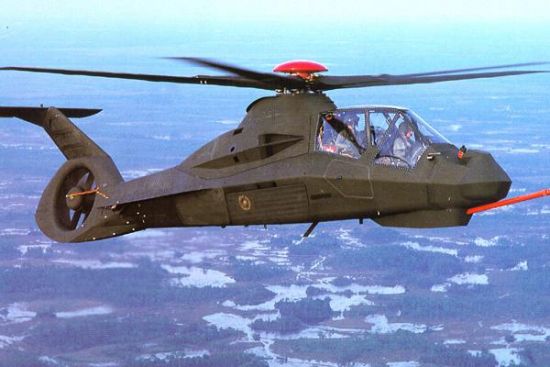But on a more nuts-and-bolts level--literally--it may have revealed something remarkable: the first look at a new breed of helicopter.
It has been widely reported that one of the aircraft the SEAL team used to drop into the bin Laden compound was unable to take off after the raid and was destroyed. One picture, the first one released...

... seemed to show debris that looked a lot like the tail boom of an MH-60 variant. (The "basic model" is the ubiquitous Blackhawk, a utility helicopter used by just about every branch of the U.S. military since the mid-70s.) But it definitely looked strange. I chalked it up to the damage suffered in the landing and the explosives that blew up the rest of the airframe.
But now a few more pictures are trickling out. Yes, the SEALs did a great job of blowing up most of the helicopter.

Er... what helicopter?
The tail boom, however, reveals some mighty interesting things. First of all, smarter people than I have discerned that the paint used is identical to the infrared-quenching stuff used on the V-22 Osprey. That's not standard issue for the MH-60. But looky here:

Anatomy of a stealthy tail rotor.
And compare that to this:

Your garden-variety tail rotor.
If nothing else, you can see that there is no rotor cap and the blades are on the opposite side. And here is another view, where the raked stabilizers are more clearly visible:

If nothing else, they look faster.
And finally, although it's a little more subtle to pick out, the lines and angles of the boom are much different than those of an off-the-shelf MH-60. In fact, they look a little more like this...

Like Blue Thunder, except non-fictional.
... the RAH-66 Comanche, a stealth helicopter developed, built and flown in the early 1990s. It was a successful program but, ultimately, mission planners realized they could do the same work more more cheaply with unmanned drones... a decision that has been borne out with the successes of the Predator, Reaper and brand-shiny-new RQ-170.
Now, "stealth helicopter" doesn't mean stealth in the now-classic sense, in which an aircraft's radar cross-section--the size it appears to be on a radar screen--is reduced to almost nothing. If nothing else, the rotor blades whirring above the fuselage are enough to give air-defense radars a nice, juicy return. But reducing the cross-section somewhat is often enough to make the aircraft effectively invisible, as helicopters are generally used for low-level flight, which obscures them in the "ground clutter": a haze of radar blips caused by objects on the ground like towers, hills, trees and buildings.
A bigger issue is noise, and the military already has quite a bit of experience in making helicopters quieter. Simple steps like adding more blades to the rotor (and you can see that the tail rotor of the bin Laden helicopter has more blades than that of a standard MH-60) make it quieter and less chop-chop-choppy. It is obviously impossible to make a gas-turbine powered aircraft completely silent, but measures such as those can make the noise at least indistinct until it is just a few hundred yards away from the listener.
So, given these facts, it's pretty obvious why they blowed it up so good. Not only was it carrying cutting-edge avionics, such as cameras that give the operators an image in every spectrum of light, but the airframe had never been seen before in public.
I realize that it is neither shocking nor surprising that the military has a few tricks up its camouflaged sleeves. But it's always interesting to see these tricks revealed, even inadvertently, for the first time... and it's always fun to speculate on what might still be out there.


1 comment:
it never ceases to amaze me the innovations that humans come up with to kill each other. where you see awe and wonder, i see killing machines.
i can feel your eyes rolling from here.
Post a Comment